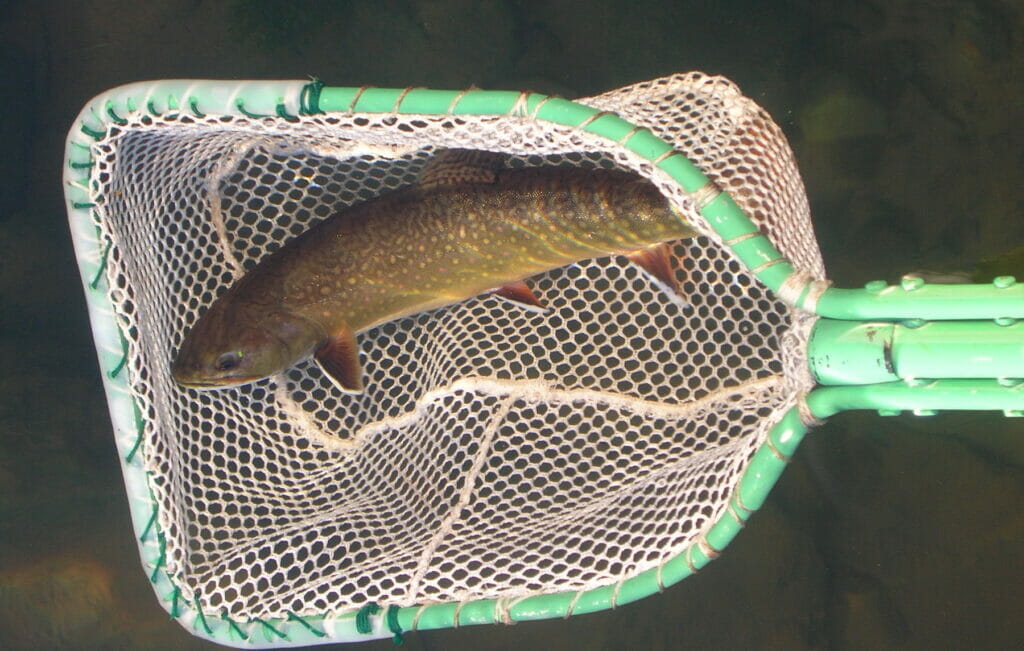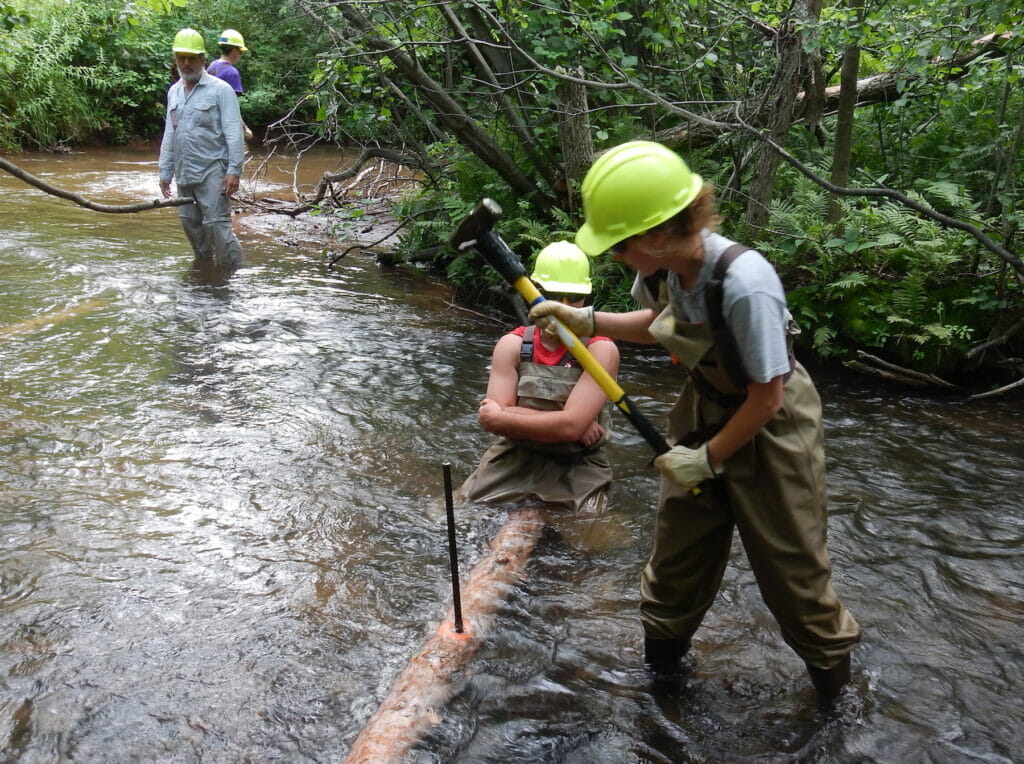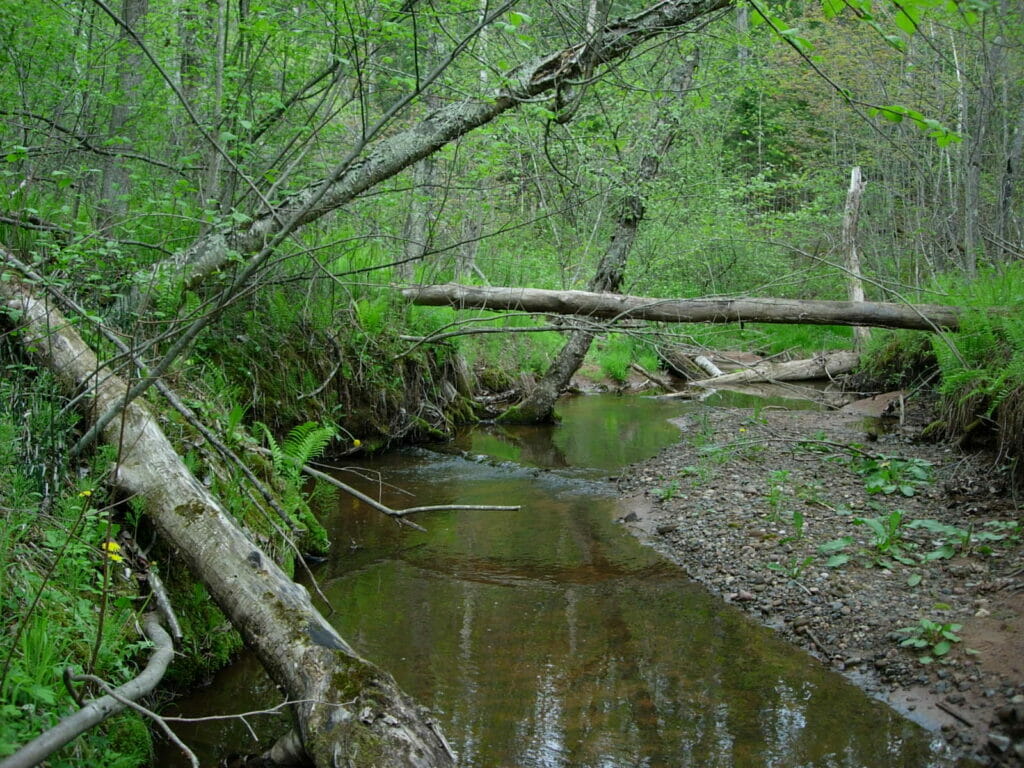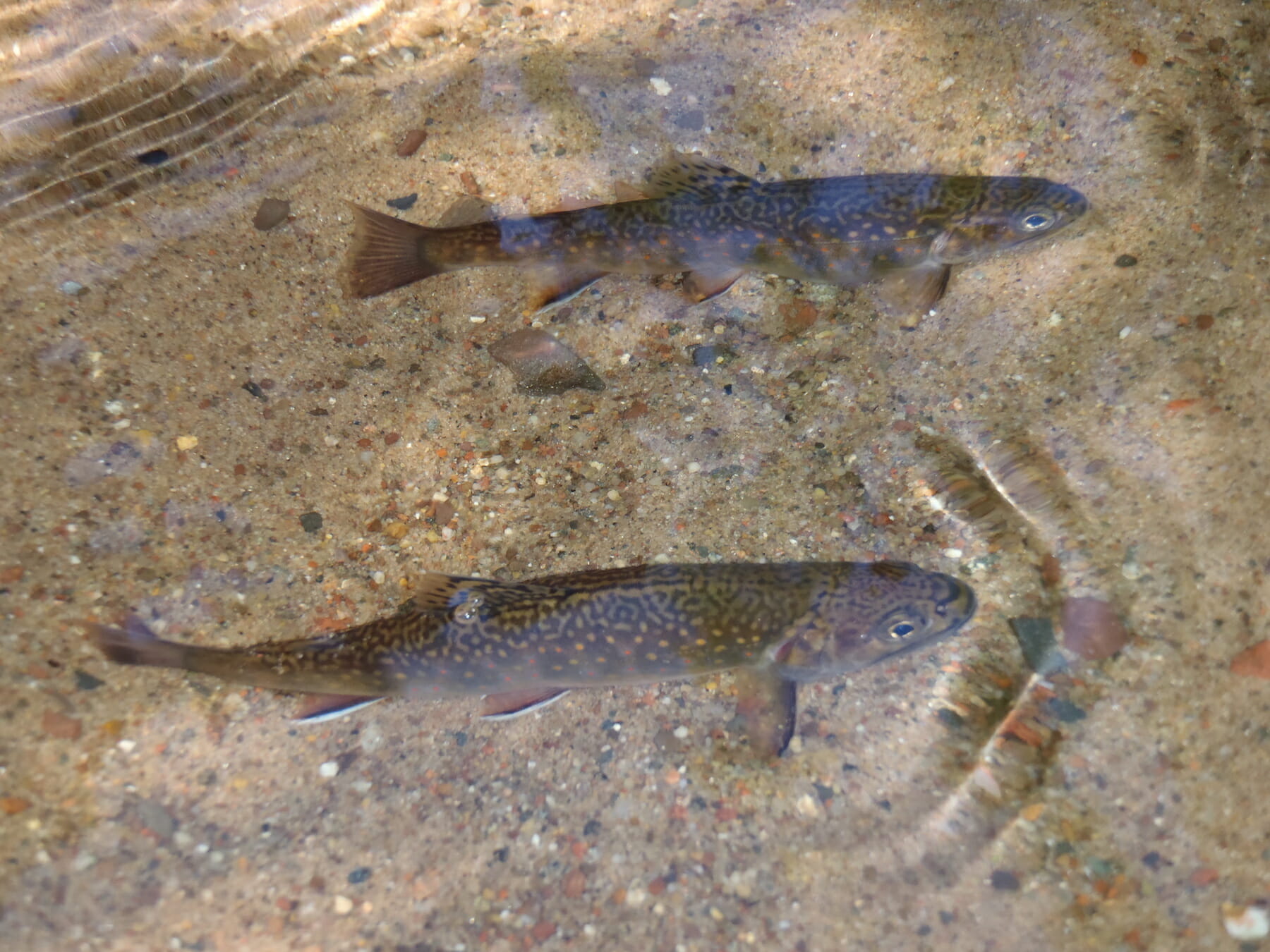Of the many forms of brook trout, one of the more unique is the coaster.
Coasters are potamodromous, spending much of their adult lives in nearshore waters of the upper Great Lakes and then migrating into streams to spawn. They can grow to larger sizes than brookies that live their entire lives in streams, and have been sought-after gamefish not only for that reason, but also because of their relative willingness to hit flies, lures and bait.
Unfortunately, once-abundant coasters are imperiled due largely to habitat loss, much of it because of large-scale timber harvest operations. The Whittlesey Creek National Wildlife Refuge in northern Wisconsin has played an important part in efforts to restore and protect coasters.
Established in 1999, the refuge covers 329 acres near Ashland, Wisc. That includes approximately a mile of Whittlesey Creek. The refuge has served as an important testing ground for a number of initiatives to try to determine the most effective way to bolster coaster populations.

According to the Wisconsin Department of Natural Resources, coasters were popular targets for anglers from the 1850s to the 1870s. Most fished from rowboats with bait along the rocky coastlines along the Bayfield Peninsula. Coasters averaged about a pound, but 3-pounders were not uncommon.
The fish ascended streams in the early fall to spawn, the young eventually making their way back down and out to the nearshore and frigid waters of Lake Superior. In the 1880s, the fishery declined dramatically. As was not uncommon in the era, pressure on the population from commercial and recreational fishing was part of the problem. Habitat degradation further contributed to the decline.
Logging was booming. Forests were cut to stream banks, and rivers and creeks were further damaged by the practice of clearing streams of woody habitat to allow for driving logs down streams to the lake. Dams were erected in headwaters. Once the ponds were packed with logs, the dams were blown, the torrent of water and logs essentially scrubbing the streams bare of fish-holding and spawning habitat and further contributing to more erosion.
Stocking helped maintain recreational fishing, but natural reproduction remained severely hampered by the lack of habitat. Despite the stocking of 500,000 brook trout from 1982 to 1996, the DNR was not able to document any natural reproduction.
Mark Brouder, a project leader in the U.S. Fish and Wildlife Service office in Ashland, said the Fish and Wildlife Service and Wisconsin Department of Natural Resource identified several tributaries where the agencies could work together to try to restore coaster populations.
“Whittlesey Creek was one of the tribs named in that plan and working in the refuge made sense,” Brouder said. “We then developed a more specific plan that implemented a multi-pronged approach.”

That approach has entailed stocking efforts utilizing coasters in all life stages, from eggs to adults. Two distinct strains of coasters — one that has been found to live its entire life in the lake and another that has shown to utilize both the lake and rivers — were used.
The plan also included implementing special regulations to protect coasters utilizing Whittlesey Creek, as well as habitat improvements both in the creek itself and on land throughout the watershed, both on and off refuge. Volunteers from Trout Unlimited’s Wild Rivers Chapter assisted with the efforts, donating hundreds of hours of labor for habitat projects and stocking efforts.
An important aspect of the effort has been working with landowners upstream from refuge property to enhance protective efforts, such as encouraging conservation easements to limit streamside development. The results have been mixed.
“I’d love to be able to say we were successful in establishing a self-sustaining, migratory coaster brook trout population in Whittlesey Creek,” Brouder said. “Unfortunately, we weren’t.”
Brouder said telemetry work showed that coasters stocked as adults quickly out-migrated to Lake Superior shortly after stocking and were rarely detected afterwards. However, the biologists did observe quite a few brook trout exhibit the adfluvial migratory life history behavior associated with coasters, with both stocked and wild caught yearlings emigrating out of Whittlesey Creek, spending varying periods of time out in Lake Superior, and returning to Whittlesey Creek. Why the multi-pronged approach to establishing a self-sustaining population of coaster brook trout in Whittlesey Creek was unsuccessful is not clear.
The creek has ample spawning habitat. In fact, it supports robust populations of wild rainbow trout and hosts a strong fall run of wild coho salmon. Brouder wonders if perhaps those existing populations of non-native salmonids might be out-competing the coasters for spawning waters and other resources.
Among the interesting findings during the effort, Brouder said it appears coasters might not simply key on a single stream. They can move among tributaries. That means, among other things, that it’s possible that coasters that left Whittlesey Creek for the lake returned to other tributaries where they were vulnerable to angler harvest because there are no special regulations prohibiting it.

Wisconsin DNR and the Fish and Wildlife Service have not given up, and Trout Unlimited volunteers remain poised to help the effort.
Whittlesey Creek NWR Manager Mitch Baalman said habitat enhancement work will continue in and along the creek. The work has also shown that restoration may hinge on a broader effort that encompasses multiple Lake Superior tributaries.
“Restoration is a long game,” Brouder said. “The work in the Whittlesey Creek refuge has been an important part of this work, and that will continue.”
Editor’s note: Of all the types of public lands, National Wildlife Refuges are the only ones in which the management is dedicated to fish and wildlife conservation. Moreover, there are six priority uses on Refuge System: hunting, fishing, wildlife observation and photography, and environmental education and interpretation. This management emphasis for conservation and our outdoor traditions makes the Refuge System tailormade for America’s hunters and anglers. Follow along as TU features wildlife refuges around the country that hold a special place in the hearts of staff and volunteers and learn more in the report, National Wildlife Refuges: A Hunting and Fishing Perspective, released by leading conservation groups and industry brands.



